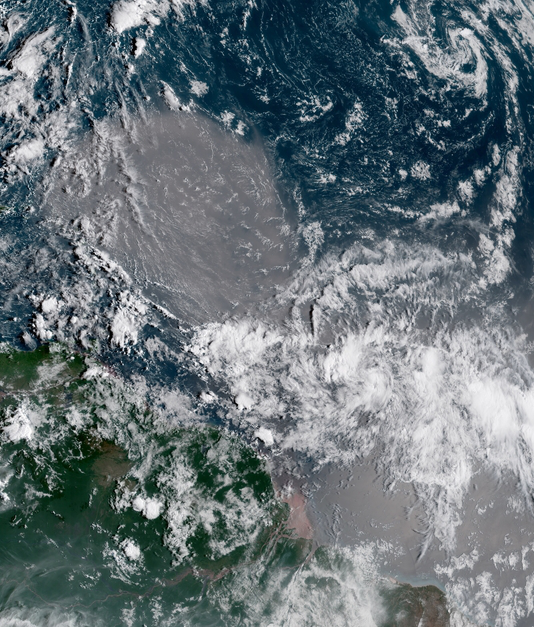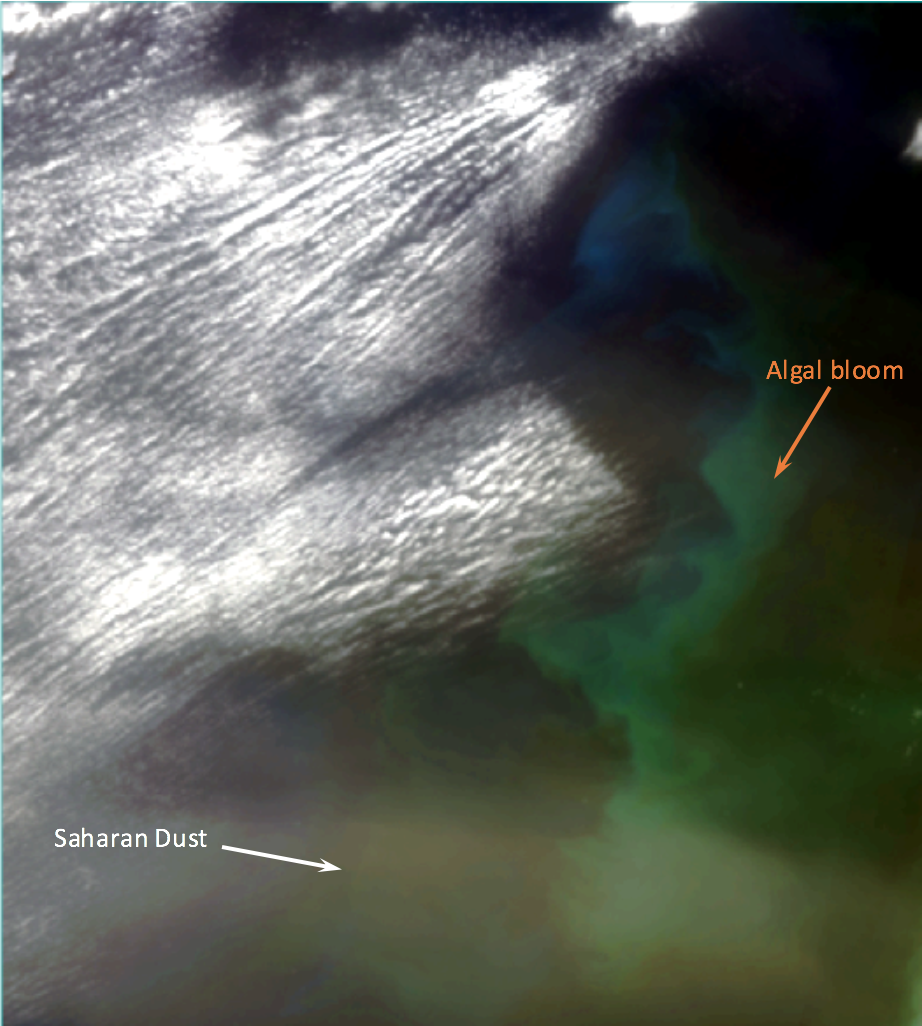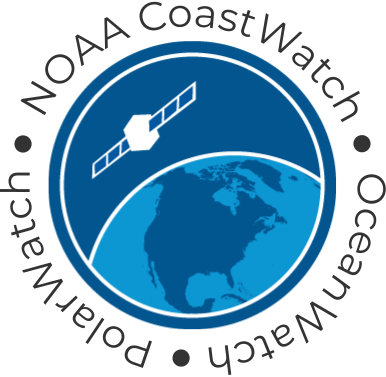| Date |
September 23, 2021
|
|---|---|
| Content Type |
User Story
|
| Author(s) | |

|
|
| Data Applications |
Ecosystem Monitoring
Fisheries & Aquaculture
|
Winds blowing across the Sahara Desert send large clouds of dust that travel thousands of miles to the Atlantic Ocean or Mediterranean Sea. The dust contains nutrients and minerals, including iron, necessary for photosynthesis and other cellular functions.

The growth of phytoplankton, microscopic plants at the base of the ocean food chain, is restricted by iron availability. When Saharan dust is blown into the ocean, phytoplankton use the iron and nutrients from the dust and begin to grow and reproduce. Large quantities of dust can stimulate phytoplankton blooms.

References and Related Reading
- Blain, S., Guieu, C., Claustre, H., Leblanc, K., Moutin, T., Quèguiner, B., Sarthou, G. (2004). Availability of iron and major nutrients for phytoplankton in the northeast Atlantic Ocean. Limnology and Oceanography 49(6): 2095-2104
- Dall’Osto, M., Harrison, R. M., Highwood, E. J., O’Dowd, C., Ceburnis, D., Querol, X., & Achterberg, E. P. (2010). Variation of the mixing state of Saharan dust particles with atmospheric transport. Atmospheric Environment 44(26): 3135-3146.
- Shi, Z., Krom, M. D., Jickells, T. D., Bonneville, S., Carslaw, K. S., Mihalopoulos, N.,Benning, L. G. (2012). Impacts on iron solubility in the mineral dust by processes in the source region and the atmosphere: A review. Aeolian Research 5: 21-42.
